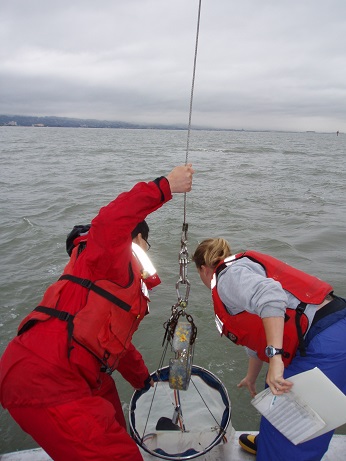Overview

Under mandate by the Ballast Water Management for Control of Nonindigenous Species Act of 1999, CDFW established its Marine Invasive Species Program (MISP) within OSPR to monitor the extent of biological invasions in the state’s marine and estuarine waters, and to evaluate the efficacy of existing management and policy strategies for reducing the rate of new invasions and their spread. Since 2000, we have executed series of contracts with several institutions to develop baseline information from field surveys and existing data, and to conduct subsequent surveys to assess changes in marine and estuarine non-native species occurrences through time. We also regularly collaborate with the California State Lands Commission (CSLC)(opens in new tab), who oversee regulations involving invasive species introductions through vectors of shipping, such as ballast water discharge and hull fouling.
For over a decade, CDFW OSPR-MISP has partnered with the Smithsonian Environmental Research Center (SERC) (opens in new tab)and the Molecular Ecology Laboratory of Moss Landing Marine Laboratories (MLML)(opens in new tab) to produce a robust, quantitative baseline of marine invasive species distributions in California coastal waters by combining traditional morphological species identification methods with molecular metagenetic species determinations from whole-sample bulk DNA. These data have largely been collected from Bays with a lot of shipping and recreational activity (e.g. San Francisco and San Pedro Bays), which are places where new invasions are most likely to appear first. Additionally, data have been collected from eight other estuaries spanning the coastline that represent primary locations where marine invasive species have been introduced and support persistent populations.
Goals of the MISP Monitoring Program
- To monitor the status of biological invasions of coastal marine ecosystems in California, and to evaluate the vectors of species introductions and spread.
- develop an understanding of the distribution of marine invasive species on a large scale (geographically along the coast) and on a small scale (within individual habitats in individual Bays).
- To detect changes in patterns of invasive species spread along the coast of California and evaluate the role of shipping management regulations on invasive species introductions and spread.
- To maintain a DNA sequence barcode database of marine invasive species detected in California’s coastal waters and to facilitate advancements in metagenetic methods of species detection through our collaborators.
- To maintain, expand, and regularly update the California Non-native Estuarine and Marine Organisms (Cal-NEMO) (opens in new tab)database as a publicly accessible resource for California marine invasive species data.
How You Can Help Prevent the Spread of Marine Invasive Species
Individual actions can make a significant difference in preventing the spread of marine invasive species. By adopting these practices, each of us can play a part in protecting California’s marine ecosystems.
- Awareness is the first step to prevention! Utilize the Cal-NEMO database (opens in new tab)to educate yourself about California marine invasive species, particularly those that are prevalent in your area. Learn about their identifying characteristics, their impacts on local ecosystems, and the ways in which they spread.
- If you participate in recreational activities like boating, fishing, or diving, be sure to thoroughly clean(opens in new tab) your equipment after each use. Invasive species can hitch a ride on boats and gear, and unknowingly transporting them can lead to new infestations. This includes cleaning the hull of your boat, emptying any standing water, and removing any visible plants or animals from your equipment.
- Never release aquarium fish or plants into the wild. If you can no longer care for an aquarium pet, find it a new home, or return it to a pet store. Even species that seem harmless can become invasive if they are introduced into new environments where they have no natural predators.
- Participate in a clean-up event! Many communities organize clean-up events in local waterways where volunteers can help remove invasive species. This not only helps control existing populations, but it also raises awareness about the issue.
- If you think you've spotted an invasive species, report it online. Early detection can be key to preventing the establishment and spread of new invasions.
- Advocate for strong policies and regulations that prevent the introduction and spread of invasive species. This can include regulations on ballast water discharge, the aquarium trade, and the importation of non-native species.
- Share your knowledge about invasive species with your friends, family, and community. The more people that are aware of the problem, the more effective we can be in preventing the spread of marine invasives.
- Join us during California Invasive Species Action Week or help out by becoming a Citizen Scientist!